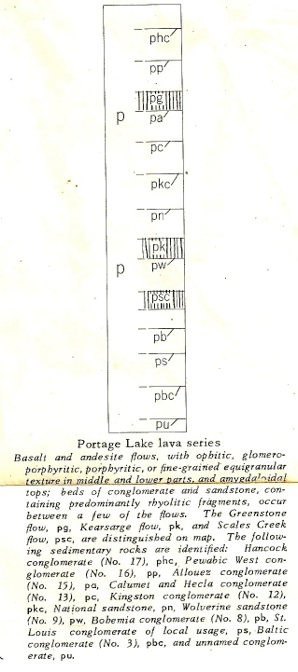Baltic (#3) Conglomerate
2013
The Portage Lake Volcanics are a series of ~400 lava flows which constitute a great flood basalt event. But the formation does not consist only of lava--it contains at least 17 conglomerate horizons. Many of these can be traced for miles and some were mineralized with copper. The conglomerates are numbered stratigraphically with the oldest one numbered #1 and the youngest #17. The position of the #3 is near the Keweenaw Fault and the oldest lavas of the group.
The Baltic Conglomerate is an important unit as it is a marker bed that underlies the series of productive mines that extend from Houghton (Mabbs Vein) through Superior Location to Baltic and Painesdale (Champion Mine). The unit is 0-25 feet in thickness (often absent) and has an erratically variable lithology that includes rhyolitic conglomerate, reddish sandstone and dark reddish shale. Conglomerates represent high energy sediments, associated with fast moving streams in this case. Shales are low energy. We interpret the #3 and other conglomerates as resulting from rivers or ephemeral streams that flowed into the rift valley during the volcanism there. The variability reflects variable rainfall conditions along with lack of vegetation to prevent rapid erosion.
Conglomerate units within the Portage Lake Volcanics
Stats
name Baltic Conglomerate
location Houghton: MTU Forestry Buiilding
DMZ Download: Here
subjects Conglomerate, Redbeds, River



Walter S White. 1956, USGS Mineral Invest Field Studies Map MF 43

X

Questions: What is the strike and dip of the Baltic #3 bed here? How do we know this is an outcrop? What type of sediment is it?

